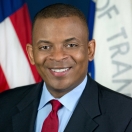
Yesterday, the U.S. Department of Transportation announced that roughly $2 billion can be freed up for states to use for rebuilding our nation’s transportation system. All of this funding was previously unspent “earmarks” that were more than a decade old, so yesterday’s action takes potentially wasteful pork barrel spending stuffed into transportation bills by Congress and puts it to good use. Instead of sitting idle, these funds will now be available to help improve our infrastructure, keep drivers safe, and provide opportunities for communities nationwide.
These steps build on actions that began in the earliest days of the Obama Administration, when the President worked together with Congress to change the way that business is done in Washington - by increasing transparency and accountability for the way that taxpayer dollars are spent, including helping end transportation earmarks. Today, those efforts are yielding real results. Clearing out this legacy backlog of earmarks frees up stranded dollars to repave roads, fix bridges, or build new interchanges, which will create jobs and lay the foundations for long-term economic growth. Yesterday’s action also builds on a similar action taken in August 2012, when USDOT made over $470 million in unspent earmarks immediately available to states for projects that create jobs and help improve transportation across the country.
As Secretary Foxx has said, “this is a tremendous opportunity for state and local governments to work together to identify their needs heading into the next 30 years. I encourage these leaders to identify projects that support their communities by increasing access to jobs, education, and basic services.”
In combination with other steps taken by the Department in recent weeks, USDOT is making billions of federal dollars available for communities across the country to improve our infrastructure and economy, foster innovation, and create access to opportunity.
For example, USDOT is currently accepting applications for $800 million available through a new (FASTLANE) grant program to fund critical freight and highway projects across the country; $500 million for transportation projects across the country under an eighth round of the highly successful Transportation Investment Generating Economic Recovery (TIGER) competitive grant program; and up to $72.5 million available this year through the University Transportation Centers (UTC) to consortia developing innovative transportation solutions.
The steps that DOT took yesterday implement a provision in the Consolidated Appropriations Act, 2016, which gave states the option of repurposing certain earmarked funds if the original earmark was over 10 years old, and if less than 10 percent of project funds had been obligated. Through the end of FY 2016, states have the option of re-designating these dollars to other projects within 50 miles of the originally intended use. A list of earmarks that may be eligible for repurposing is available here. This guidance describes the process by which state Departments of Transportation issue such notifications, making the funds immediately available for use.
Collectively, these investments are an important step in realizing the President’s vision for modernizing the transportation system.
But more work remains to be done. In this year’s budget, the President laid out his vision for a 21st Century Clean Transportation System. The plan calls for increasing Federal investments in surface transportation by 50% while reforming the investments we already make to help reduce carbon pollution, cut oil consumption, and create new jobs. These investments would make transportation easier for American families, reduce carbon pollution, and strengthen our economy. And they would be fully paid for by a combination of a new $10 per barrel fee on oil, which would be paid for by oil companies and pro-growth business tax reform.
The Administration looks forward to working with Congress to put our transportation system on a long-term, sustainable path. In the meantime, we will keep doing everything we can to make funding available for local and state governments.




